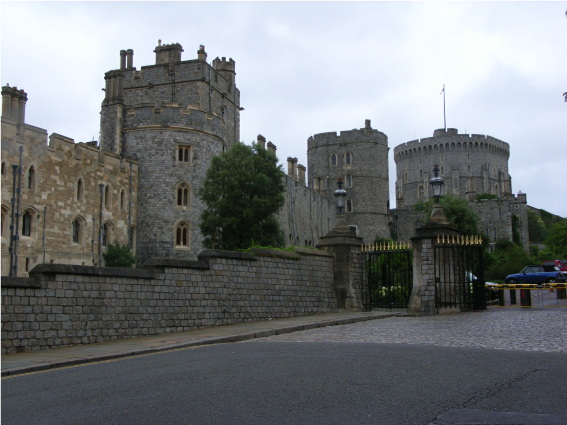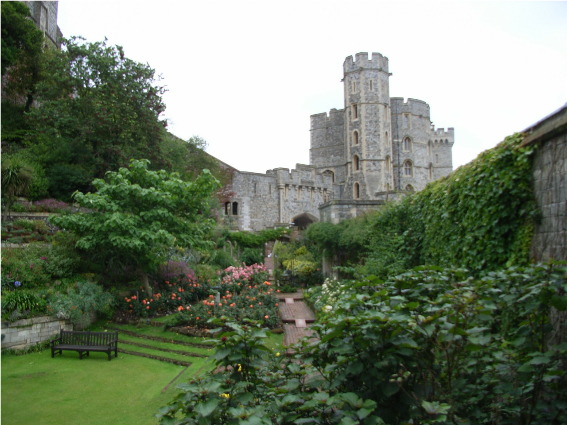Windsor Castle
Windsor Castle is the worlds oldest and largest occupied castle dating back to the 11th century and William the Conqueror. Since the time of Henry I (1100 1135) it has been used by the English Monarch and has undergone substantial enlargements and improvements from Henry II (1154 1189) up to the present Queen Elizabeth II who uses it as a private residence during her weekends and also for ceremonial and State occasions.
The castle was originally designed as part of a ring of castles to protect London after the Norman invasion. Constructed as a motte and bailey, it consists of three wards built around a central mound. The palace was built by Henry III (1216 1272) as a Royal Palace and this was improved by Edward III (1327 1377). During the reign of Henry VIII (1509 1547) and Elizabeth I (1558 1603) it was used extensively as a Royal Court for diplomatic purposes.
During the English Civil War (1642 1651) it was used by the Parliamentary forces as a military headquarters and was subsequently the place that Charles I (1625 1649) was imprisoned prior to his execution. Following the restoration of the Monarchy Charles II (1660 1665) carried out a number of projects at Windsor Castle.
During the 18th century the castle suffered some neglect before being renovated by both George III (1760 1820) and George IV (1820 1830) who made substantial changes making it into how it is today. During the time of Victoria (1837-1901) it was used extensively for entertaining.
On the night of 20th November 1991 it suffered a fire which destroyed some of the most historic parts of the castle included the Crimson Drawing Room, the Green Drawing Room and the Queen's Private Chapel. St George's Hall also suffered damage as did the State Dining Room and the Grand Reception Room. The cost of repair amounted to £36.5m which was obtained by the formation of a trust and by charging members of the public an entrance fee to visit the castle and personal donations by the Queen.
Covering an area of more than thirteen acres (five hectares), Windsor Castle provides fortification, a palace, and a small town. The Middle Ward is positioned on a motte which is a raised earthwork 15 metres high. On the motte is the Keep called the Round Tower which is built on top of the original 12th century building.
From the Middle Ward a gateway leads onto the North Terrace. The eastern exit from the ward is guarded by the Norman Gatehouse which dates from the 14th century, this is vaulted and decorated with carvings of medieval lion masks (the traditional symbols of Royalty) and forms the entrance to the Upper Ward.
The Upper Ward consists of a number of buildings enclosed by the upper bailey wall, which forms a central quadrangle. The State Apartments run along the north of the ward, while the private royal apartments and the King George IV Gate are to the south, with the Edward III Tower in the south-west corner.
The existing building is laid on the medieval foundations constructed by Edward III. The ground floor provides the service chambers and cellars, with the first floor forming the main much grander part of the palace.
The rooms are designed in the Classical, Gothic and Rococo styles, together with an element of Jacobean. Many of the rooms were restored after the fire of 1991 to their original appearance, although modern materials were used in the process. On a tour of the castle visitors are able to visit some of the State Rooms, although photography is not permitted.


To see more photographs and take a virtual tour of the site click on the photoshow below.
Addition information can be seen on Encyclopaedia Britannica
